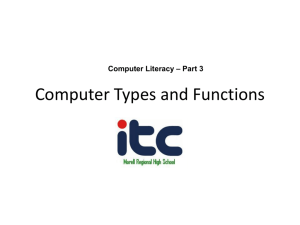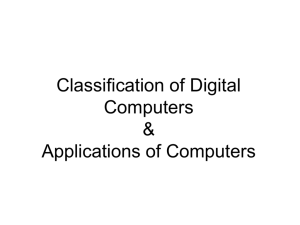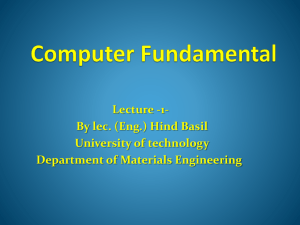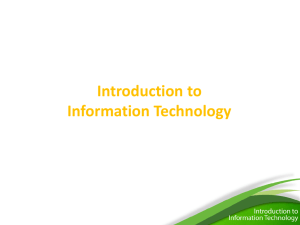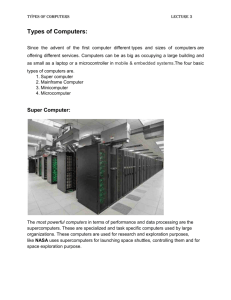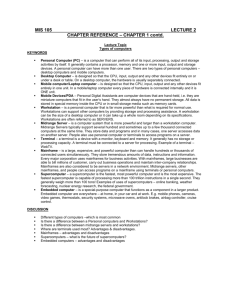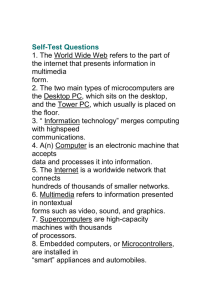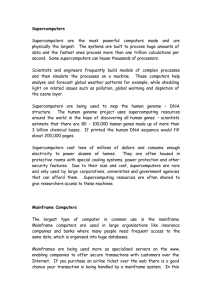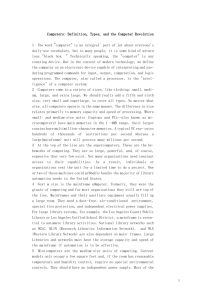Types of Computers: Supercomputers, Mainframes, and More
advertisement
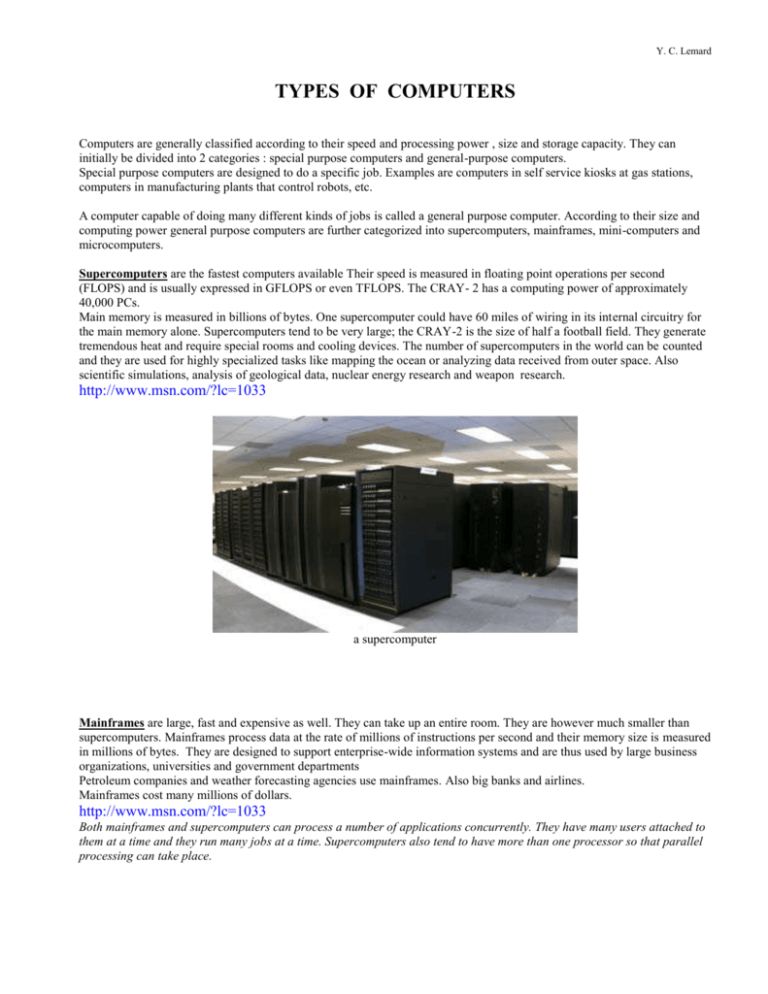
Y. C. Lemard TYPES OF COMPUTERS Computers are generally classified according to their speed and processing power , size and storage capacity. They can initially be divided into 2 categories : special purpose computers and general-purpose computers. Special purpose computers are designed to do a specific job. Examples are computers in self service kiosks at gas stations, computers in manufacturing plants that control robots, etc. A computer capable of doing many different kinds of jobs is called a general purpose computer. According to their size and computing power general purpose computers are further categorized into supercomputers, mainframes, mini-computers and microcomputers. Supercomputers are the fastest computers available Their speed is measured in floating point operations per second (FLOPS) and is usually expressed in GFLOPS or even TFLOPS. The CRAY- 2 has a computing power of approximately 40,000 PCs. Main memory is measured in billions of bytes. One supercomputer could have 60 miles of wiring in its internal circuitry for the main memory alone. Supercomputers tend to be very large; the CRAY-2 is the size of half a football field. They generate tremendous heat and require special rooms and cooling devices. The number of supercomputers in the world can be counted and they are used for highly specialized tasks like mapping the ocean or analyzing data received from outer space. Also scientific simulations, analysis of geological data, nuclear energy research and weapon research. http://www.msn.com/?lc=1033 a supercomputer Mainframes are large, fast and expensive as well. They can take up an entire room. They are however much smaller than supercomputers. Mainframes process data at the rate of millions of instructions per second and their memory size is measured in millions of bytes. They are designed to support enterprise-wide information systems and are thus used by large business organizations, universities and government departments Petroleum companies and weather forecasting agencies use mainframes. Also big banks and airlines. Mainframes cost many millions of dollars. http://www.msn.com/?lc=1033 Both mainframes and supercomputers can process a number of applications concurrently. They have many users attached to them at a time and they run many jobs at a time. Supercomputers also tend to have more than one processor so that parallel processing can take place. Y. C. Lemard a mainframecomputer system A minicomputer Minicomputers are next in line and are smaller in size and capabilities. They are still, however, large computers systems. They are easier to install and operate than mainframes and take up less floor space. A minicomputer may typically be the size of a filing cabinet. Minicomputers are used in situations requiring 100s of users to have simultaneous access to a machine and high computing power is required, thus they are normally found in industry or business places. Most banks have mini computers controlling their operations. Their cost is in the range of hundreds of thousands of US dollars. http://search400.techtarget.com/sDefinition/0,,sid3_gci212577,00.html Microcomputers. These are the most popular type of computers and are called micros because they contain a microprocessor which contains the CPU. Since they were designed for personal use they also became known as personal computers (PCs). They are small in size, easy to use, single user, and have low computing power (relative to the other types of computers). Micros have been advancing rapidly in technology since the 1980s however, and some today have the same capabilities as low-end minicomputers. http://search400.techtarget.com/sDefinition/0,,sid3_gci212577,00.html http://search400.techtarget.com/sDefinition/0,,sid3_gci212577,00.html PC’s can be desktop or portable. They are several varieties of portable micros – laptops, notebooks, pocket PCs, PDAs
